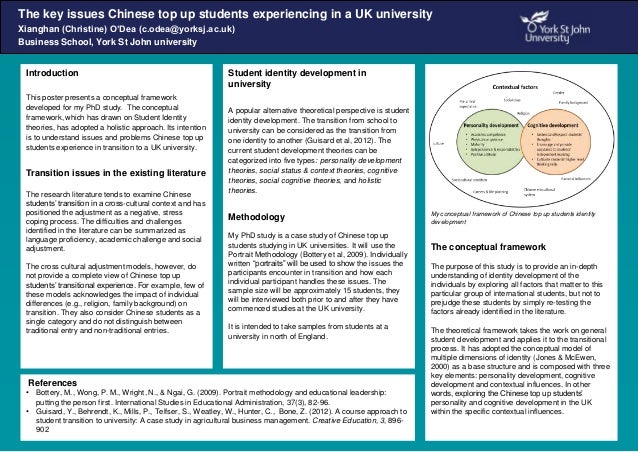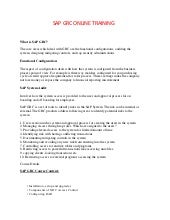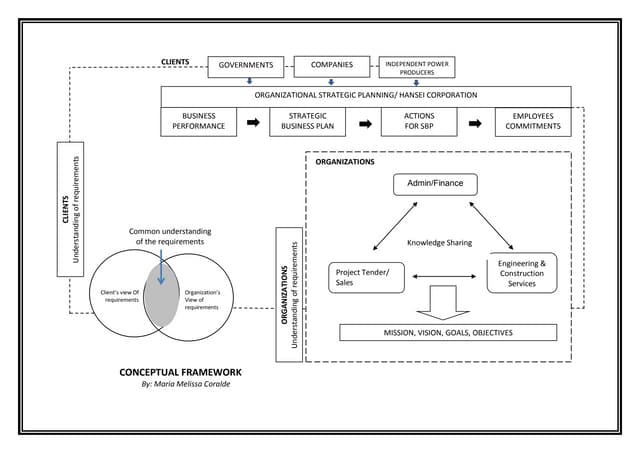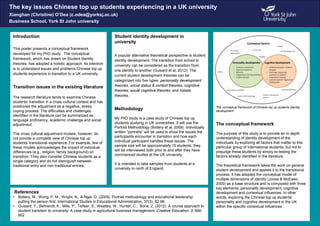You’ve unlocked unlimited downloads on SlideShare!
Your download should start automatically, if not click here to downloadYou also get free access to Scribd!
- Instant access to millions of ebooks, audiobooks, magazines, podcasts, and more.
- Read and listen offline with any device.
- Free access to premium services like TuneIn, Mubi, and more.
Want to download this document?
Sign up for a Scribd free trial to download now.
Download with free trial-
Theoretical framework by HeyImAra 68367 views
-
Decision framework sample 2 by Mashauri Limited 1781 views
-
SAP GRC TRAINING by Keen IT Technolog... 616 views
-
Diversity Leadership Poster by Jasmine L. Richar... 102 views
-
sample conceptual framework by Maria Melissa Cor... 511 views
-
ICFNJ presentation Laura Prioteasa ... by Laura Prioteasa 1800 views
Download to read offline
Want to download this document?
Sign up for a Scribd free trial to download now.
Download with free trialSrhe conference 2014 poster
Download to read offline
Want to download this document?
Sign up for a Scribd free trial to download now.
Download with free trial
Purpose
The paper sets out a theoretical framework that has been developed to help understand the transitional experience of Chinese top up students at university. The framework has been developed from two psychosocial student development theories, Schlossberg’s transition theory (Schlossberg, 2005) and Chickering's identity development theory (Chickering & Reisser, 1993).
Since 2000, Chinese students account for the largest proportion of all international students worldwide. As a result, the transition of Chinese students in Western universities has become a popular research topic in the higher education field. However, most of the published studies consider Chinese students as a single category and do not distinguish between traditional entry and direct entry. This work will look specifically at the transition experience of Chinese top up students.
Nature of Research
The paper outlines the initial stages of a PhD study. It will present the development of the conceptual framework for the study and the literature review.
Methodology
The study is a case study of Chinese students studying at UK universities. It will use the Portrait Methodology (Bottery et al, 2009). Individually written “portraits” will be used to show how each individual participant handles the issues students face in transition. The sample size will be approximately 15 students, they will be interviewed both prior to and after they have commenced studies at a uk university. It is intended to take samples from students at a university in north of England.
Main arguments
The transition process is considered to be a “stress coping” process. In particular, it is a cultural adjustment issue and can be considered to comprise three factors: language anxiety, social anxiety and the academic anxiety (Zhou & Todman, 2008; Liu, & Jackson, 2008).
Work on general student development considers a transition to be a developmental process consisting of moving in, moving through and moving out stages of each individual transition (Schlossberg, 2005). Chickering defines it as consisting of 7 vectors, which are stages of development of identity.
The theoretical framework takes the work on general student development and applies it to the transitional process. It synthesizes the work of existing student identity development theories into a process that looks at both temporal and identity development and applies it to the transitional development of top up Chinese students.
Recommended
-
 Theoretical frameworkHeyImAra
Theoretical frameworkHeyImAra -
 Decision framework sample 2Mashauri Limited
Decision framework sample 2Mashauri Limited -
 SAP GRC TRAININGKeen IT Technologies Pvt. Ltd.
SAP GRC TRAININGKeen IT Technologies Pvt. Ltd. -
 Diversity Leadership PosterJasmine L. Richardson
Diversity Leadership PosterJasmine L. Richardson -
 sample conceptual frameworkMaria Melissa Coralde, MBA
sample conceptual frameworkMaria Melissa Coralde, MBA -
 ICFNJ presentation Laura Prioteasa finalLaura Prioteasa
ICFNJ presentation Laura Prioteasa finalLaura Prioteasa -
 Learning team 3 poster presentation 11.11.13Chris Pinones
Learning team 3 poster presentation 11.11.13Chris Pinones -
 The evolution of_management_theory_9_18_06_uploadKuan-Yin Cai
The evolution of_management_theory_9_18_06_uploadKuan-Yin Cai -
 Conceptual FrameworkMina Badiei
Conceptual FrameworkMina Badiei -
 Online Poster Presentation: EchinaceaVeronica Shuford
Online Poster Presentation: EchinaceaVeronica Shuford
Related Books
Free with a 30 day trial from Scribd
Related Audiobooks
Free with a 30 day trial from Scribd
-
Be the first to like this
Srhe conference 2014 poster
- 1. The key issues Chinese top up students experiencing in a UK university Xianghan (Christine) O’Dea (c.odea@yorksj.ac.uk) Business School, York St John university Introduction This poster presents a conceptual framework developed for my PhD study. The conceptual framework, which has drawn on Student Identity theories, has adopted a holistic approach. Its intention is to understand issues and problems Chinese top up students experience in transition to a UK university. Transition issues in the existing literature The research literature tends to examine Chinese students’ transition in a cross-cultural context and has positioned the adjustment as a negative, stress coping process. The difficulties and challenges identified in the literature can be summarized as language proficiency, academic challenge and social adjustment. The cross cultural adjustment models, however, do not provide a complete view of Chinese top up students’ transitional experience. For example, few of these models acknowledges the impact of individual differences (e.g., religion, family background) on transition. They also consider Chinese students as a single category and do not distinguish between traditional entry and non-traditional entries. Student identity development in university A popular alternative theoretical perspective is student identity development. The transition from school to university can be considered as the transition from one identity to another (Guisard et al, 2012). The current student development theories can be categorized into five types: personality development theories, social status & context theories, cognitive theories, social cognitive theories, and holistic theories. Methodology My PhD study is a case study of Chinese top up students studying in UK universities. It will use the Portrait Methodology (Bottery et al, 2009). Individually written “portraits” will be used to show the issues the participants encounter in transition and how each individual participant handles these issues. The sample size will be approximately 15 students, they will be interviewed both prior to and after they have commenced studies at the UK university. It is intended to take samples from students at a university in north of England. The conceptual framework The purpose of this study is to provide an in-depth understanding of identity development of the individuals by exploring all factors that matter to this particular group of international students, but not to prejudge these students by simply re-testing the factors already identified in the literature. The theoretical framework takes the work on general student development and applies it to the transitional process. It has adopted the conceptual model of multiple dimensions of identity (Jones & McEwen, 2000) as a base structure and is composed with three key elements: personality development, cognitive development and contextual influences. In other words, exploring the Chinese top up students’ personality and cognitive development in the UK within the specific contextual influences. References • Bottery, M., Wong, P. M., Wright, N., & Ngai, G. (2009). Portrait methodology and educational leadership: putting the person first. International Studies in Educational Administration, 37(3), 82-96. • Guisard, Y., Behrendt, K., Mills, P., Telfser, S., Weatley, W., Hunter, C., Bone, Z. (2012). A course approach to student transition to university: A case study in agricultural business management. Creative Education, 3, 896- 902 My conceptual framework of Chinese top up students identity development
Purpose The paper sets out a theoretical framework that has been developed to help understand the transitional experience of Chinese top up students at university. The framework has been developed from two psychosocial student development theories, Schlossberg’s transition theory (Schlossberg, 2005) and Chickering's identity development theory (Chickering & Reisser, 1993). Since 2000, Chinese students account for the largest proportion of all international students worldwide. As a result, the transition of Chinese students in Western universities has become a popular research topic in the higher education field. However, most of the published studies consider Chinese students as a single category and do not distinguish between traditional entry and direct entry. This work will look specifically at the transition experience of Chinese top up students. Nature of Research The paper outlines the initial stages of a PhD study. It will present the development of the conceptual framework for the study and the literature review. Methodology The study is a case study of Chinese students studying at UK universities. It will use the Portrait Methodology (Bottery et al, 2009). Individually written “portraits” will be used to show how each individual participant handles the issues students face in transition. The sample size will be approximately 15 students, they will be interviewed both prior to and after they have commenced studies at a uk university. It is intended to take samples from students at a university in north of England. Main arguments The transition process is considered to be a “stress coping” process. In particular, it is a cultural adjustment issue and can be considered to comprise three factors: language anxiety, social anxiety and the academic anxiety (Zhou & Todman, 2008; Liu, & Jackson, 2008). Work on general student development considers a transition to be a developmental process consisting of moving in, moving through and moving out stages of each individual transition (Schlossberg, 2005). Chickering defines it as consisting of 7 vectors, which are stages of development of identity. The theoretical framework takes the work on general student development and applies it to the transitional process. It synthesizes the work of existing student identity development theories into a process that looks at both temporal and identity development and applies it to the transitional development of top up Chinese students.
Views
Total views
799
On Slideshare
0
From embeds
0
Number of embeds
308
Actions
Downloads
9
Shares
0
Comments
0
Likes
0













































